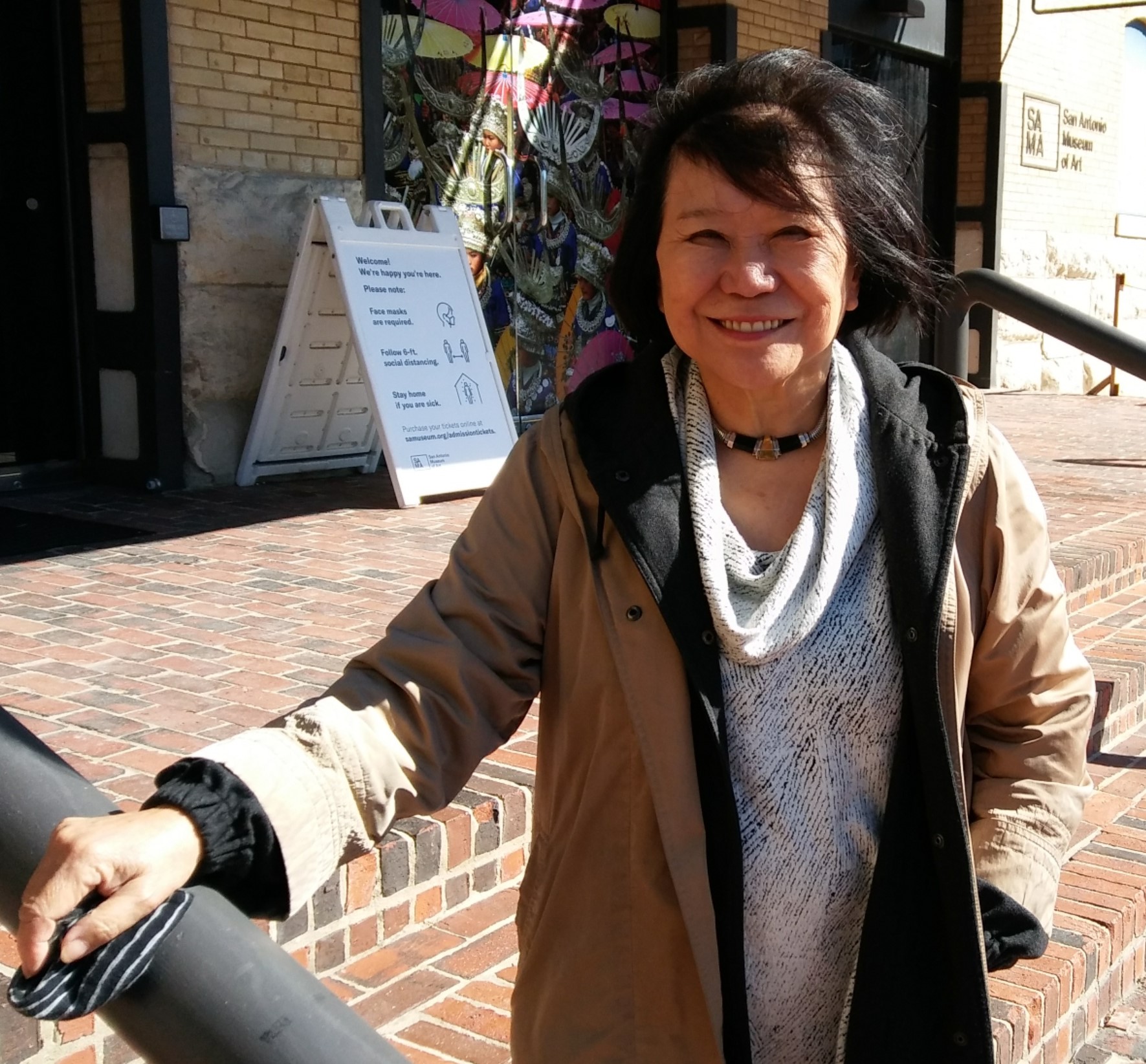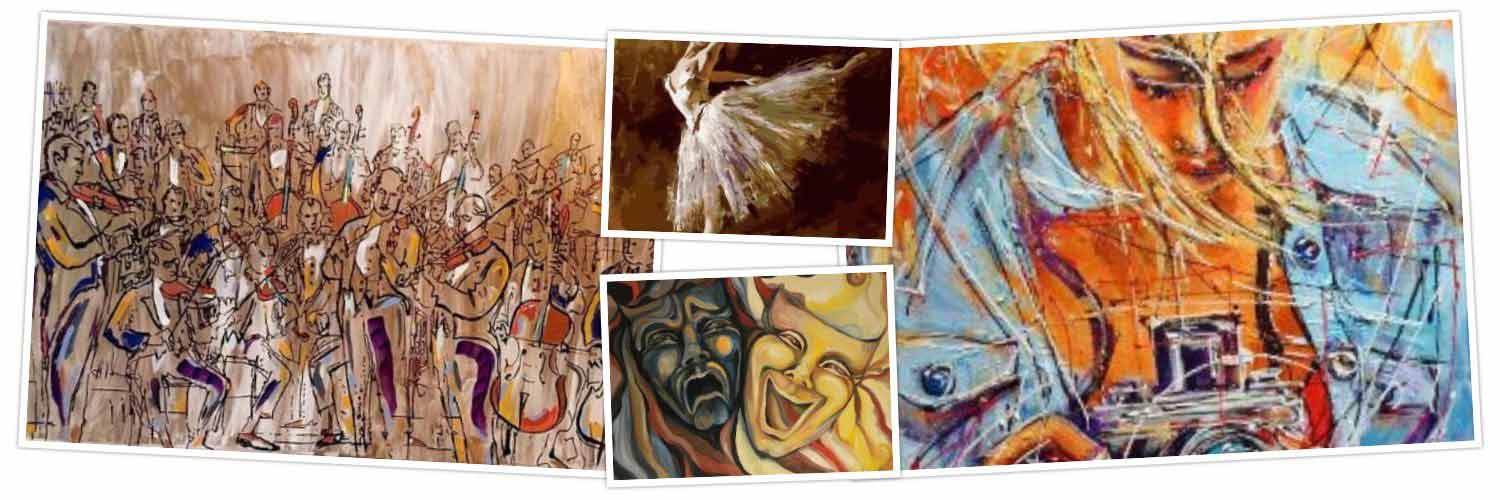Emily Sano: Artistic Adviser for Asian Art & Co-interim director, San Antonio Museum of Art
BY JASMINA WELLINGHOFF, Editor —
The museum reopened in late May. How has everything been going since?
We closed March 13 and reopened May 26. We were one of the first museums in Texas to reopen after the shutdown. The Houston Fine Arts Museum was the first and it opened just a few days before SAMA did. And everything has been fine. We have not had any complaints. The numbers of visitors go up and down depending on what’s going on with the rate of infection in the city. We operate at 50% capacity, but our galleries are so huge that we could easily have 75% (and still allow for social distancing).

And the Latin American Popular Art (Folk Art) Gallery reopened after three years of being closed. The gallery had flooded three years ago and everything had to be taken out of there. Restoring that space was the first job of the new curator of Latin American Art, Lucia Abramovich. In May she and the staff started reinstalling that gallery and we reopened it in early September.
Is that a name change from the original Latin American Folk Art?
Yes, “popular art” is a direct translation from the Spanish “arte popular” and the curators want to retrain people to think about “popular art” as indigenous art.
What are you personally focusing on right now?
I am the head of the Asian Art Department because that’s my background. However, in March, I was asked to be one of the interim co-directors. So, my focus is to help manage the museum day-to-day but also planning future exhibitions and programs.
Tell us about the upcoming exhibitions.
In the spring of 2021, we will have a show called “No Ocean Between Us” which will feature artists of mixed Asian and Latin American heritage. There have been migrations of Asians into Latin America in the past and the artists in this exhibit are descendants of those immigrants, mostly Chinese and Southeast Asians. A few have a Japanese heritage. That will be contemporary art.
For the summer, we have planned an American Impressionism show, and after that, a show from Italy called “Roman Landscapes.” The curator, Jessica Powers, has been working on this one for years. It’s an exhibit of murals with landscape scenes from ancient Rome and Pompeii.
Is the search for a new SAMA director still ongoing and are you one of the candidates?
No, I am not! (said with conviction and a laugh). I have done that kind of work already as the director of the Asian Art Museum in San Francisco for 15 years (where she oversaw major changes). Now I have other things to do. I have research projects to work on.
Right now, my main research project is on Japanese folding screens that the museum purchased to add to the present collection. The imagery is based on the 11th century Japanese novel called “The Tale of Genji.” It was written by a noblewoman, Murasaki Shikibu, who wrote about imperial court life, focusing on the handsome young Prince Genji. Since the 11th century, this novel has been illustrated by artists who depicted chapters of the book. That long tradition is still being studied today. The museum also has a screen that illustrates another novel from that time, written by another lady of the court. It’s really quite fascinating. So, I am doing research on these novels and the paintings that we have. It will be a very exciting thing for people to see.
Your title is Senior Adviser for Asian Art. Why not curator?
That’s a good question! When I took the job, I had already retired once (from the San Francisco museum), so, I wasn’t envisioning it as a long-term position but I wanted to be in a senior position and I thought that title sounded like a senior position (chuckles). But, yes, I am doing curatorial work.
How would you describe the scope and strength of the Asian Art collection at SAMA?
The collection was quite a surprise to me when I got here. It’s sizeable and some of it is excellently magnificent, first class, A+. This is especially true of the Chinese collection which includes lots of Chinese ceramics. The Chinese pretty much invented ceramics and took the art to its highest level. The museum was blessed to receive the Walter and Leonora Brown generous donation of Chinese ceramics. We have some truly unique pieces, three of which are blue & white porcelains that are highly desirable. Right now, they are on loan to the Museum of Fine Arts in Houston. I went to see their exhibit and it’s quite magnificent; it features blue & white examples from all over the world but the special pieces are these three pieces from SAMA. A plate similar to the one we have recently sold for $1.6M… But our Asian collection is quite broad, with special Japanese, Tibetan, Indian and Southeast Asian pieces.
Why did you move to San Antonio in 2015 after your “retirement” from the San Francisco job?
I loved San Francisco, but my partner, (architect/lawyer Gilson Riecken) and I wanted to build a house and we couldn’t afford it in San Francisco. He had worked at Ford, Powell & Carson architecture firm for a number of years, and I had worked for the Kimble Art Museum for a number of years, and we met in Fort Worth at the Kimble. So, we had that Texas connection and familiarity with the state. He particularly liked San Antonio where he had spent 17 years. We told a friend from San Antonio, the late great Nancy Hamon, that we were looking around in Texas… and she made it possible for us to purchase the land that our house is on. That’s how we came to San Antonio.
Tell us a bit about how you developed an interest in art history.
My parents wanted me to go into the sciences so that I could get a good job and support myself. However, in college I took a course in Japanese (both her parents are Japanese), loved it and wanted to go to Japan. I did my junior year abroad, in Japan, where I attended a Japanese language school that had a number of art historians among its students. They were so interesting to me because they went to see museums, galleries, antique shops. I hung out with them and I really loved it. When I returned, I took as many courses in art history as I could. I also won a scholarship that allowed me to go to a graduate school of my choice, so I chose Colombia University where I enrolled in art history. I have traveled to Japan many times since, mostly for research purposes.
Do you feel comfortable in Japan?
Yes and no. I am definitely American, but I look Japanese, so that’s uncomfortable. They expect me to be one of them and I am not. I still love the culture, however. And I am very interested in the history of Japanese art.
What do you and Gilson like to do for fun and relaxation?
We have a house in Maine where we would like to spend our summers. That was another reason why I didn’t want to become a full-time director (laughs). We watch movies, I like to cook, we travel… those are the things we like to do.
How would you describe yourself as a boss, and how do you think others would describe you?
As a boss, I think that I can be visionary and I like to believe that I can motivate people to accomplish things. As to how they see me, I think they see me as being rather tough – as one who doesn’t suffer fools, as I have been told – and ambitious. I think they also see me as compassionate and supportive. At least I hope that’s how they see me.
Do you hang out with other museum directors in town or collaborate in any way?
We would do it more if it weren’t for COVID. I am very fond of Richard Aste; he is very remarkable. But I have to confess I haven’t yet been to the Briscoe Museum but I will after reading your article. (Interview Express, July 28, 2020)
What’s the best advice you have ever received?
Hmm…, Probably the advice to follow your dreams. It was very tough with my family being so opposed to my choice of career. My father, in particular, harbored a great deal of resentment because I wouldn’t do what he told me to do. I cannot recall anyone who actually said “Follow your dreams” but it’s a common “message” in American culture. I am glad I did because I am one of relatively few people who actually enjoys her work.
Can you remember a gift that surprised or pleased you in a special way?
The best gifts were the artworks I received from artists, especially from Chinese artist Hung Liu. She is a dear friend whom I met when I was working at the Kimble Art Museum. She’s brilliant; has become quite a successful painter. I really appreciated her gift very much.
What do you like to give to family and friends?
I like to give books and I like to give jewelry.
What do you think Americans could learn from the Japanese culture and what would be good for the Japanese to learn from us?
One thing that Americans can learn from the Japanese is an appreciation for refined silence, meaning to create spaces for reflection or meditation. What the Japanese could learn from the Americans is how to be less formal and more straightforward. They hide their emotions a lot. You know, two Japanese men may be working in the same office for years, and one of them may hate the other but the other man will never know it. There’s another thing, too. In Japanese culture no one is permitted to stand out. That is unfortunate, I think. They still have ranks and you have to obey the rules of behavior for your rank.
Do you have a life motto, a guiding principle of some sort?
Life motto, no, but I say to myself that I would like to feel at the end of my life that I had done something useful.
—————————————————————————————————————–
Current special exhibit: “Exquisite Adornment,” Turkmen and Miao Jewelry.
Upcoming exhibits in 2021: “No Ocean Between Us,” Feb. 12-May 9; America’s Impressionism, June 11-September 15; “Roman Landscapes: Visions of Nature and Myth from Rome and Pompeii, October 16-January 9, 2021. San Antonio Museum of Art, 200 West Jones Ave., San Antonio, 78215, 210-978-8100; open 10 a.m. – 5 p.m.

What a delightful interview! Thanks!
Emily is such a pleasure to work in securing a few export ceramic loans on view at the Briscoe, and we are looking forward to her visit to the Briscoe Western Art Museum.
This is such a wonderful article on Dr. Sano! She is such a sweet, intelligent and humble woman and I feel so lucky to know her and work at the same museum as her. 🙂